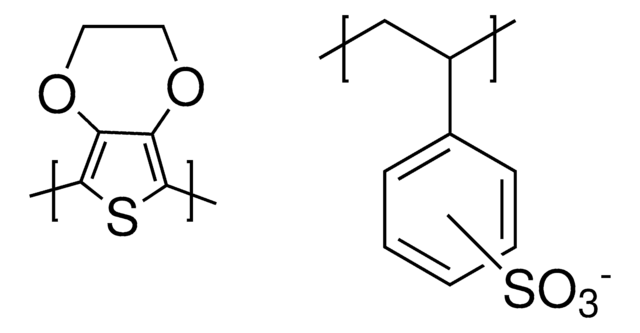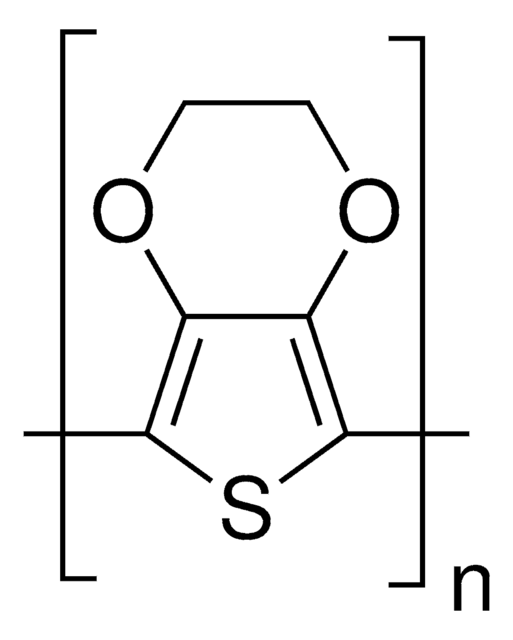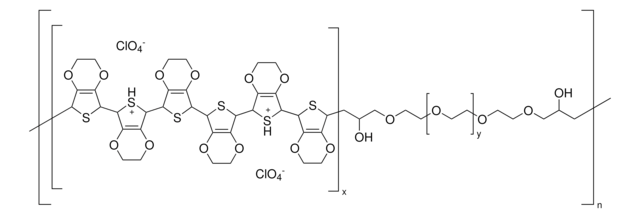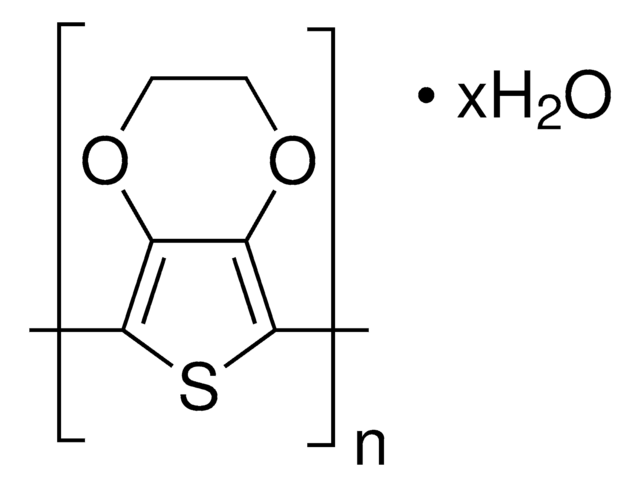768650
Poly(3,4-ethylenedioxythiophene)-poly(styrenesulfonate)
5.0 wt. %, conductive screen printable ink
Sinonimo/i:
Orgacon™ EL-P-5015, PEDOT:PSS, Poly(2,3-dihydrothieno-1,4-dioxin)-poly(styrenesulfonate)
About This Item
Prodotti consigliati
Livello qualitativo
Forma fisica
paste
Caratteristiche più verdi
Design for Energy Efficiency
Learn more about the Principles of Green Chemistry.
sustainability
Greener Alternative Product
Concentrazione
5.0 wt. %
Resistenza
≤130 Ω/sq
pH
1.5-2.0
Viscosità
≥50,000 mPa.s(20 °C)
Categoria alternativa più verde
Temperatura di conservazione
20-25°C
Cerchi prodotti simili? Visita Guida al confronto tra prodotti
Descrizione generale
- low band gap
- good optical properties
- high conductivity
- low redox potential
- easy processing
- tunable film forming ability
Applicazioni
Curing temp. 130°C during 3 min
Note legali
Avvertenze
Danger
Indicazioni di pericolo
Consigli di prudenza
Classi di pericolo
Eye Dam. 1 - Skin Irrit. 2
Codice della classe di stoccaggio
10 - Combustible liquids
Classe di pericolosità dell'acqua (WGK)
WGK 3
Punto d’infiammabilità (°F)
208.0 °F
Punto d’infiammabilità (°C)
97.77 °C
Scegli una delle versioni più recenti:
Possiedi già questo prodotto?
I documenti relativi ai prodotti acquistati recentemente sono disponibili nell’Archivio dei documenti.
I clienti hanno visto anche
Articoli
A detailed article on conducting polymer materials for flexible organic photovoltaics (OPVs) applications.
Find advantages of inorganic interface layer inks for organic electronic & other applications.
The emerging field of printed electronics requires a suite of functional materials for applications including flexible and large-area displays, radio frequency identification tags, portable energy harvesting and storage, biomedical and environmental sensor arrays,5,6 and logic circuits.
Progress in Organic Thermoelectric Materials & Devices including high ZT values of >0.2 at room temperature by p-type (PEDOT:PSS) & n-type (Poly[Kx(Ni-ett)]) materials are discussed.
Il team dei nostri ricercatori vanta grande esperienza in tutte le aree della ricerca quali Life Science, scienza dei materiali, sintesi chimica, cromatografia, discipline analitiche, ecc..
Contatta l'Assistenza Tecnica.







